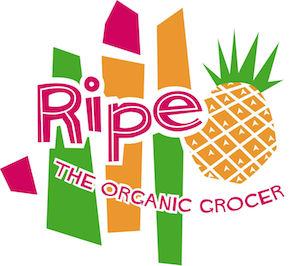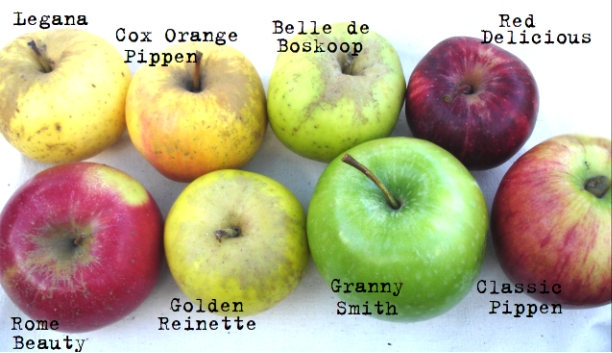
Apples
Apples
One of the best things about apples is the great variety in flavour, appearance and texture, thanks to the many thousands of varieties. With the simple procedure of grafting, the world has seen up to 7000 varieties of apples over the fruit’s long history. The apple is a member of the same plant family as roses. It is believed that the ornamental crab apple tree is the closest relative to the original ‘wild’ apple, which came from central Asia. A decade or so ago, it was difficult to get much variety when buying apples, but today, there are hundreds of varieties once again being grown commercially. Organic farmers have increasing support for their heritage apples, and many older varieties are being saved from extinction with their popularity with customers. Their long season and Australia’s varied climates can ensure that the wait for new season apples is fairly short, over early summer. Harvesting of fruit begins late summer/early autumn and apples are available until the next summer, with their growing peak in Autumn.
The different varieties have their own specified season, for example jonathons are harvested in February, finishing around June whereas the Lady Williams are available for sale around October to January. It is common practice to cold store apples to extend their availability, which is why some apples are available long after they have been harvested. Whilst some apples benefit from some time in cold storage (to mellow tart flavours), if they are kept for too long, they can become floury and will not last long out of storage. At the height of apple season, markets can display up to 20 varieties. It is hard to believe that there might be a difference between them all, but getting the right apple is important. To know what is the better eating apple compared to what will make beautiful stewed fruit to what will make a nice jam can be confusing but part of the fun with apples. Never shy from asking us which apple is better, and ask to try, so you can compare for yourself.
Apples have a colouring that is either red, green, yellow or a mix of all three. The flesh is white (some varieties are whiter than others) and can taste from tart to sweet, depending on the variety. Most of our apples are grown either locally in Victoria or in Tasmania.
Popular varieties for eating are; gala, granny smiths, golden delicious, pink ladies, fujis, jonathons, mutsu, red delicious and spartans.
Other eating varieties are; cox orange pippins (very popular apple in England), braeburns (popular New Zealand graft variety), lady williams and gravensteins.
Apples that are good for cooking; granny smiths, cox orange pippins, gravensteins, lady williams and goldendelicious.
These are not all the varieties available during a season, but some of the most common.
Having a diverse range of organic apples available commercially is crucial if we want to protect the many hundreds of varieties of apples that exist. As backyard apple trees are no longer common in Australian cities, we are reliant on commercial growers to keep alive the diversity in this important fruit crop. Growers of conventional apple crops look for qualities in apples that may suprise you, as they are often quite different to the qualities that we look for when choosing fruit to eat. For example, apple growers tend to stick to varieties that have bright skin colour, lengthy storage ability (up to 9 months!) high yields, the ability to travel long distances without bruising, and a shape that makes the application of pesticides easy. Growing just a few varieties (but thousands of trees of them ) enables large commercial enterprises to harvest quickly and efficiently and then with storage maintain an even supply to supermarkets. Conventional processing after harvest with further insecticides, chemical treatments dyes and sometimes waxes also prolongs the life of the common apple. Unfortunately, apples that are grown in this way often taste awful, despite looking ok in the shops. We have all experienced the bitter disappointment of biting into a good looking but tasteless, old apple!
Apple trees are grown from grafts, as plants propagated from seeds often revert to their early form producing fruit similar to the crab apple. The natural processes of cross pollination and grafting strong varieties together has given the world thousands of apple varieties, suited to local climates, tastes and for different cooking methods. Heritage Apple varieties are closely linked to cultural heritage, and some can be traced back as far as the 16th century. In days past, apples were valued differently. In Europe, and early colonial settlements, communities would have had many varieties of apples in their orchards. As different apples ripened over many months, from late summer through to spring, a continual harvest meant that apples could be eaten fresh. The many different flavours textures and aromas of apples were all cherished, with many considered delicacies, and prepared in special dishes.The keeping and cooking qualities were also very important, and apples that were grown for making cider were an especially important crop.
Many Organic Growers are now preserving these wonderful heritage apple varieties, by growing them as commercial crops. If we loose these trees, we will no longer be able to taste and enjoy these wonderful apple varieties, and they’ll no longer exist for future generations. As an example of the fantastic variety available (when in season) check out the list of varieties at the right. We’ve not even listed them all! Sometimes Organic Apples are slightly less that perfect looking, and their keeping qualities are varied, so it does pay to ask staff what the best apples are when you’re shopping. We’re always happy to let you taste, and to let you know our own favourites. Organic Apples are more labour intensive to grow and get to market, and sometimes the yield is much lower than conventional farming. They are also sometimes a little wonky looking, but often so much tastier!
ORGANIC & HERITAGE APPLE VARIETIES AT RIPE
Abas
Akane
Adams Pearmain
Alexander
Baldwin
Bonza
Belle de Boskop
Braeburn
Boskoop
Boswell
Bramley
Bramley’s Seedling
Catshead
Cleopatra
Cox Orange Pippin
Crispin
Crofton
Delicious
Democrat
Discovery
Egremont Russet
Emperor
Empire:
Freyberg
Fuji
Gala
Golden Delicious
Golden Reinette
Granny Smith
Gravenstein
Ida Red
Issac Newton
James Grieve
Jersey Mac
Jonagold
Jonathon
King of the Pippins
Lady Williams
Mutsu
Opalescent
Pink Lady
Red Braeburn
Red Fuji
Red Delicious
Red Splendour
Red Rome
Rienette
Rome Beauty
Royal Gala
Seedless
Snow Apple
Spartan
Splendour
Stayman’s Winesap
Stewarts Seedling
Sturmer Pippin
Sundowner
Twenty Ounce
Tydeman’s Early
Yates

